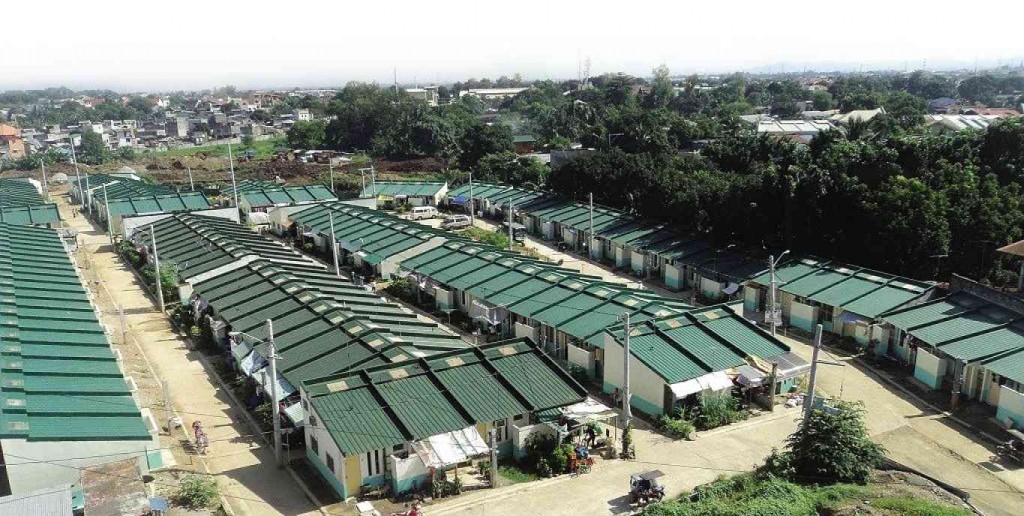Informal settlements as new growth areas

BUILDING more houses that benefit the masses is inextricably linked to the wider health of the economy, the financial markets and consumer confidence.
The unabated expansion of informal settlements here in Metro Manila as well as in other highly urbanized parts of the country has remained a nagging problem for many decades.
The Metropolitan Manila Development Authority in 2010 has estimated that there are already 2.8 million informal settlers—that’s 556,526 families—living in Metro Manila. Of this number, 104,000 families are occupying areas identified by the Department of the Interior and Local Government as danger zones, such as railroad tracks, garbage dumps, canals, rivers and creeks.
“Instead of seeing these informal settlers as the problem, why not look at them as the very same people who can help us solve the nagging problem of informal settlements—and regard their place as a potential growth area?” asked Armenia Ballesteros, president of the Subdivision and Housing Developers Association (SHDA). “This is why we have included this issue in the first panel discussion in the upcoming national developers convention,” she said.
The 24th SHDA National Developers Convention will be held from Sept. 17 to 18 at the Makati Shangri-La Hotel. This year’s theme is “Building a Million Dreams. Stronger in Synergy, Towards A Green and Sheltered Nation.”
“All the stakeholders will be there as well as all of SHDA’s 200-strong members coming from all over the country,” said Rodel Racadio, SHDA first vice president and this year’s convention chair.
Article continues after this advertisementRacadio shared that panel discussion issues slated on the first day of the convention will include the opportunities in public-private partnership or PPP for real estate business. “This proposal would significantly help the government’s socialized-housing program succeed and, at the same time, benefit Filipinos who belong to the bottom of the pyramid through inclusive growth,” he said.
Article continues after this advertisementThere’s a reason why construction of more socialized housing projects or those with units priced P450,000 and below should be encouraged. This type of home package—that may be a residential subdivision, multilevel and medium-rise housing, or condominium projects—could benefit more underprivileged families as well as those living in informal settlements.
Avenue for growth
“This is an avenue of growth for us,” explained Ballesteros.
Under the PPP, private developers will be in charge of preparing the building plans, undertaking and financing the construction of socialized low-rise buildings, assisting the processing of housing loans for the informal settler family-beneficiaries, and organizing a condominium corporation for these housing projects.
For its part, the government would subsidize the provision of in-city land that should be fully developed and buildable. Government agencies can then assist by recognizing the project as the developers’ compliance to the socialized housing requirement, setting a price ceiling for the socialized housing units, and extending affordable home loan values to the beneficiaries. For the concerned local government unit, its role would include the fast tracking of permits and providing property management for completed projects.
Ballesteros said this socialized housing compliance arrangement that SHDA members have been undertaking, under various arrangements, across the country has been proven successful.
In fact, the Fifth Annual Forum of the Business Call to Action (BCtA) held last year in New York invited one of SHDA executives to share how his company’s inclusive growth strategy was able to strengthen progress for low-income communities and made meaningful, sustainable impact-building real markets and provided benefits that go beyond job creation to lasting social change.
In his speech, Willie Uy, president and CEO of Phinma Property Holdings Corp. and also SHDA board adviser, described how his company’s socialized housing project in Quezon City became a success: “Socialized housing in itself is an enticing venture. Because Bistekville 2 was a PPP, there was little market risk, it reflected the developer’s social responsibility, required minimal marketing and the target market, the informal settler families were provided not only with decent housing but livelihood options as well, making them a stronger market base and a more productive community.”
Uy explained that the way to respond to the problem of informal settlements is not to simply relocate them to far-flung areas, away from economic opportunities that are normally concentrated in the city.
Integrate
Uy said: “Towards providing long-term solution to the problem of urban slum settlements is to integrate them in the urban landscape with provision of clean water, livelihood, as well as a safe environment. By doing this we provide them access to a better, well-dignified life.” said.
Aside from the PPP, the 24th SHDA National Developers Convention will also tackle the role that its members could play in the development of tourism areas in the Philippines.
For the first half of 2015, the Philippines has already welcomed a total of 2.61 million visitors, a 7.65-percent increase over the same months of 2014 (2.43 million), according to the most recent Department of Tourism report. Last year, the country received 4.83 million tourists. But despite these impressive growth, the country’s tourism industry is still lagging behind its neighbors like Hong Kong, Macau, Thailand, Singapore and Malaysia.
Racadio explained: “It’s another growth area that has remained under-tapped. To further stimulate tourism, investments are needed. The country needs more accommodations with standards of quality befitting foreign tourists. All these facilities should be developed in a sufficient way. As developers, we could contribute significantly. The opportunities that tourism presents encourage entrepreneurship and stimulate business.”